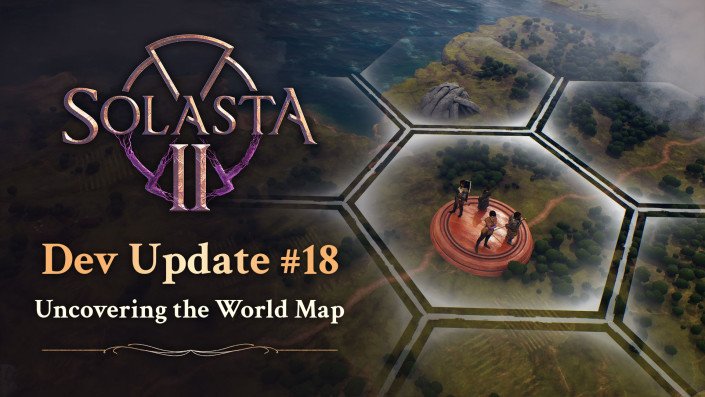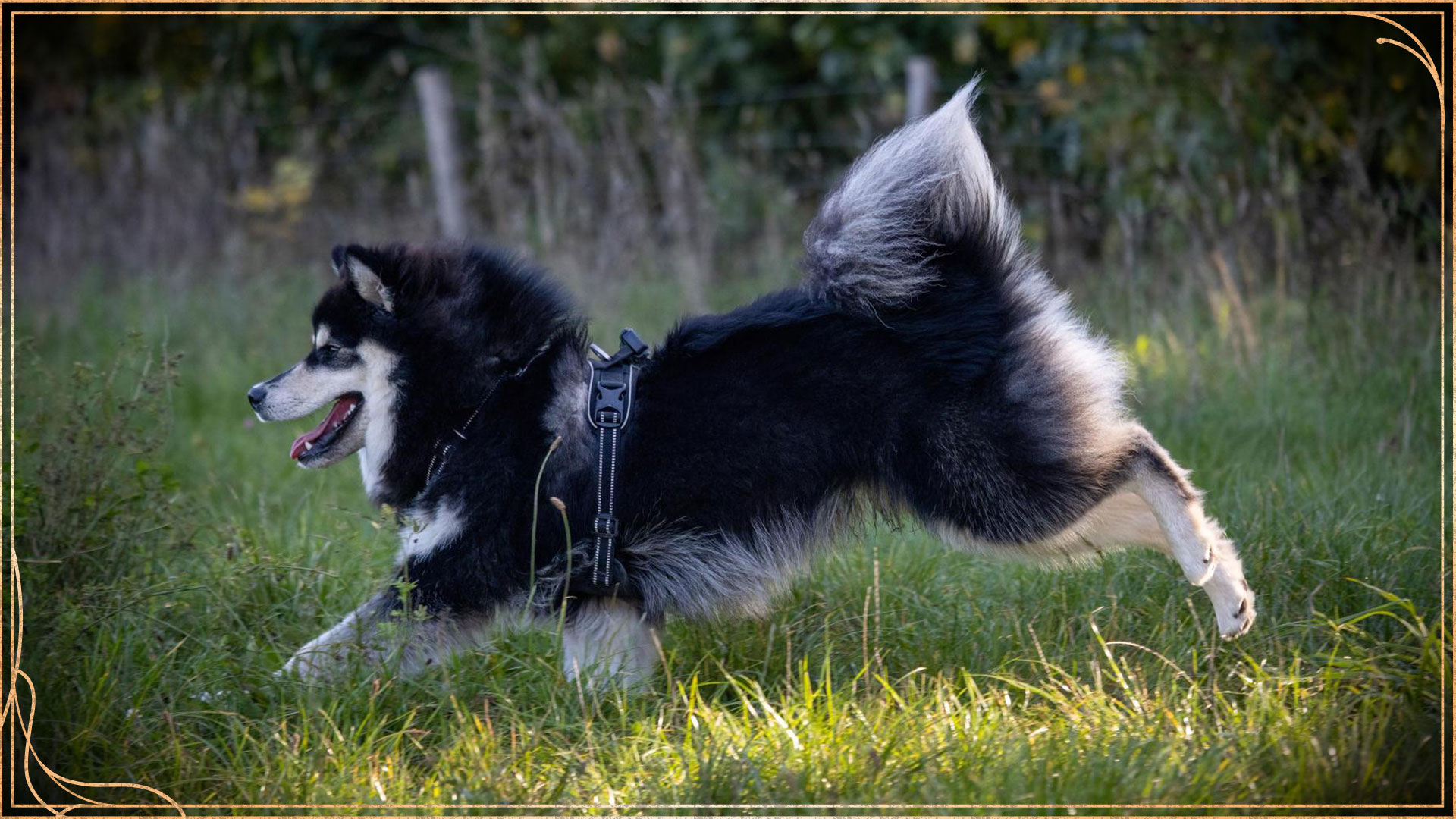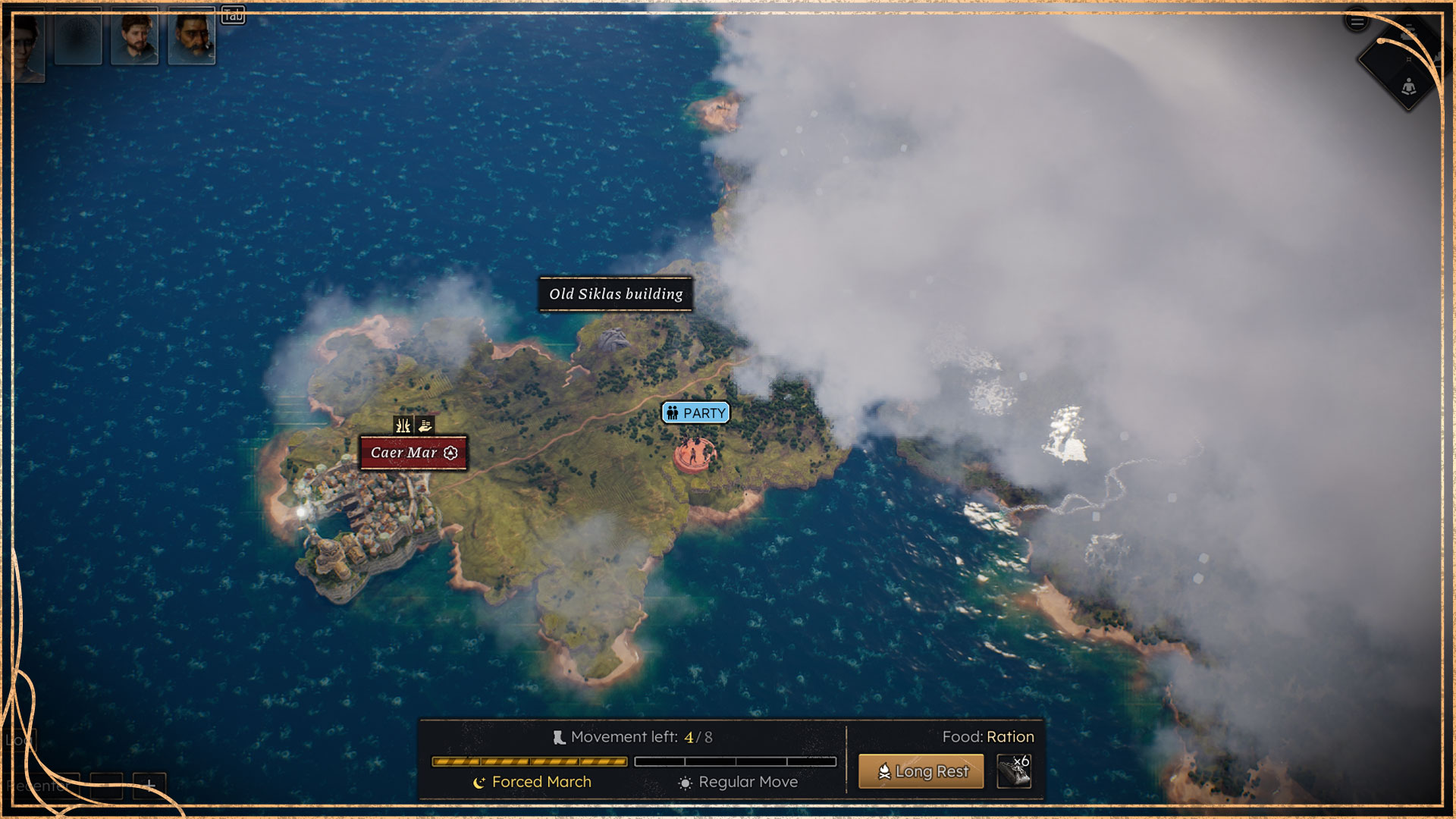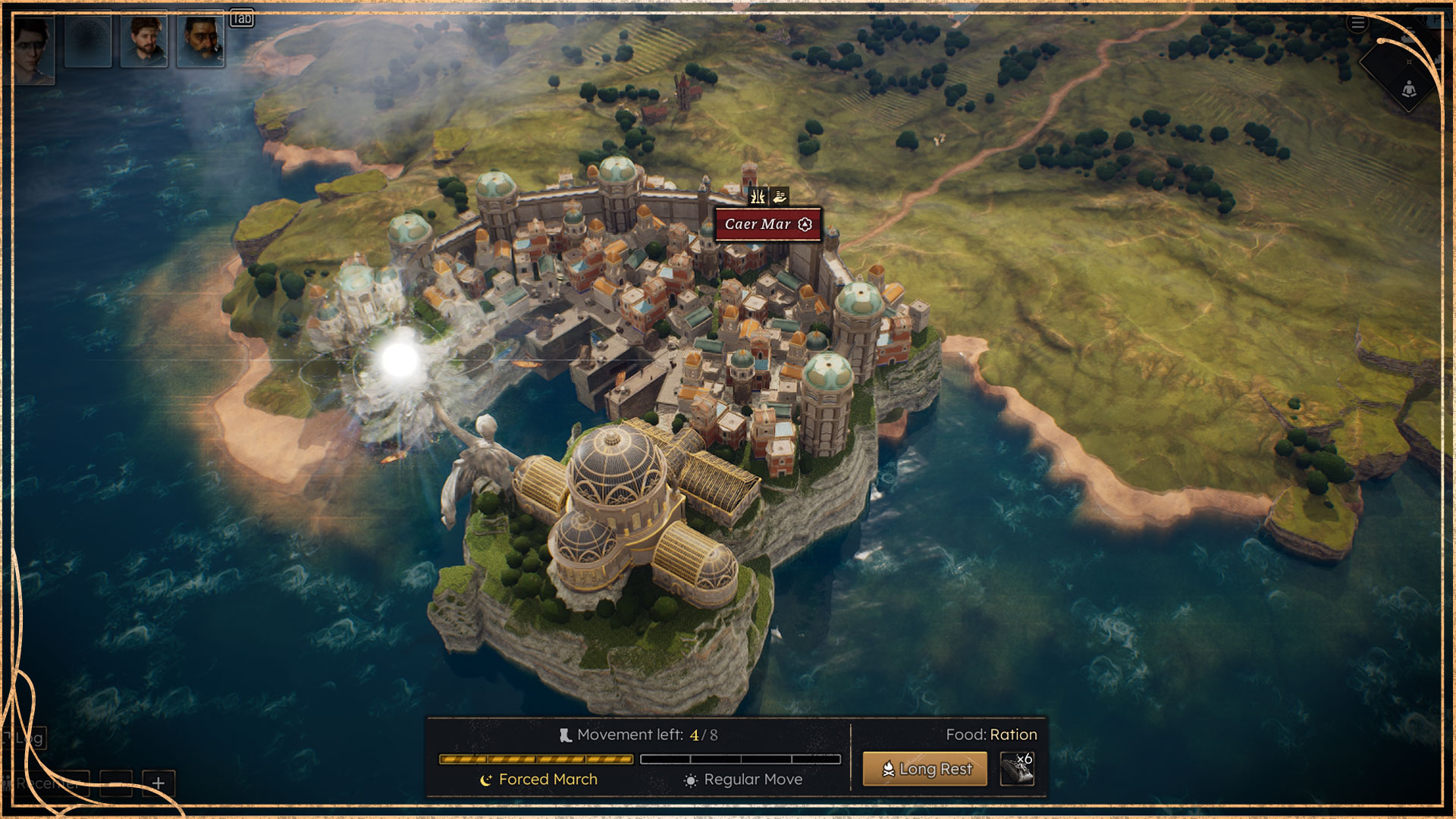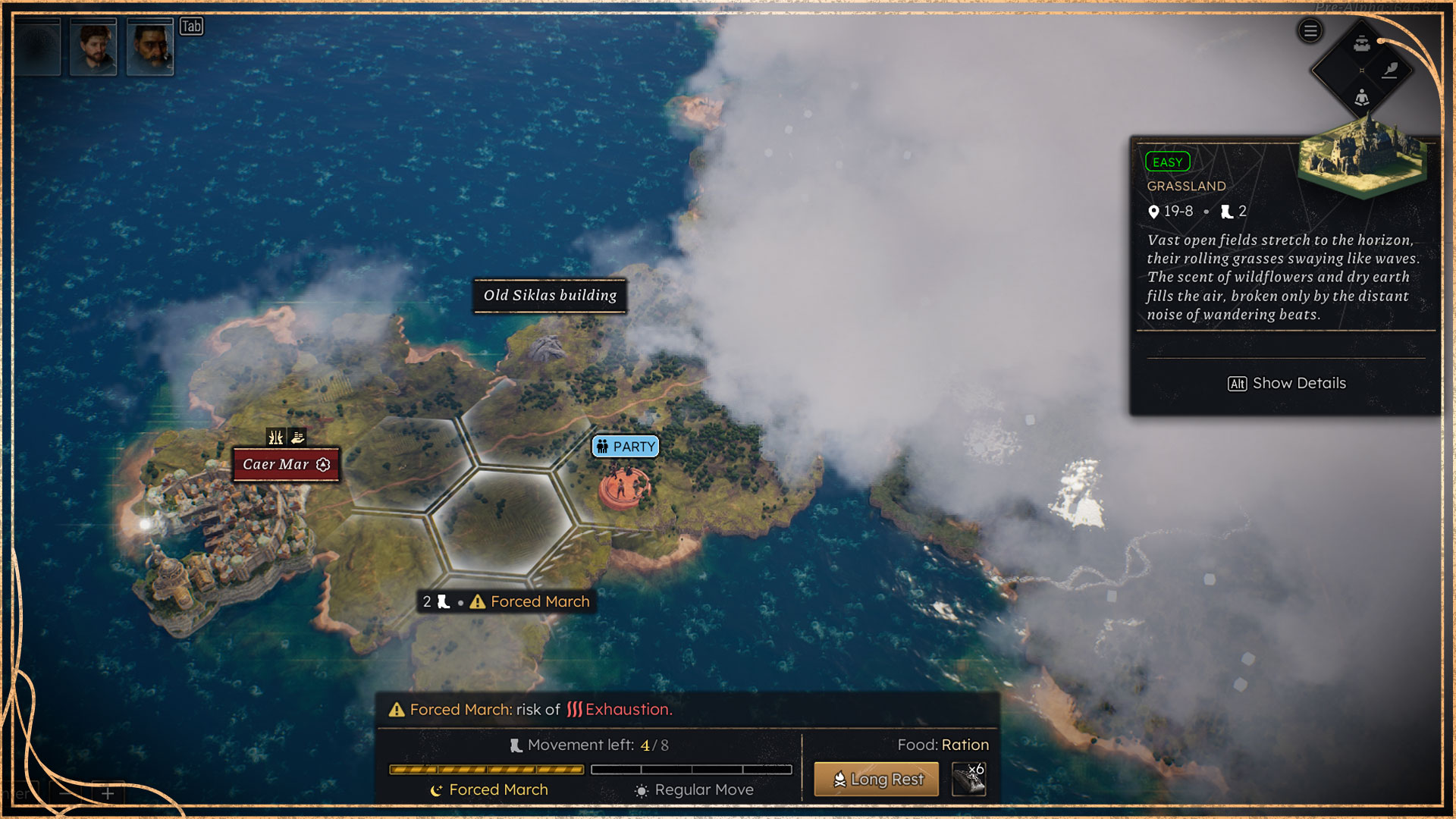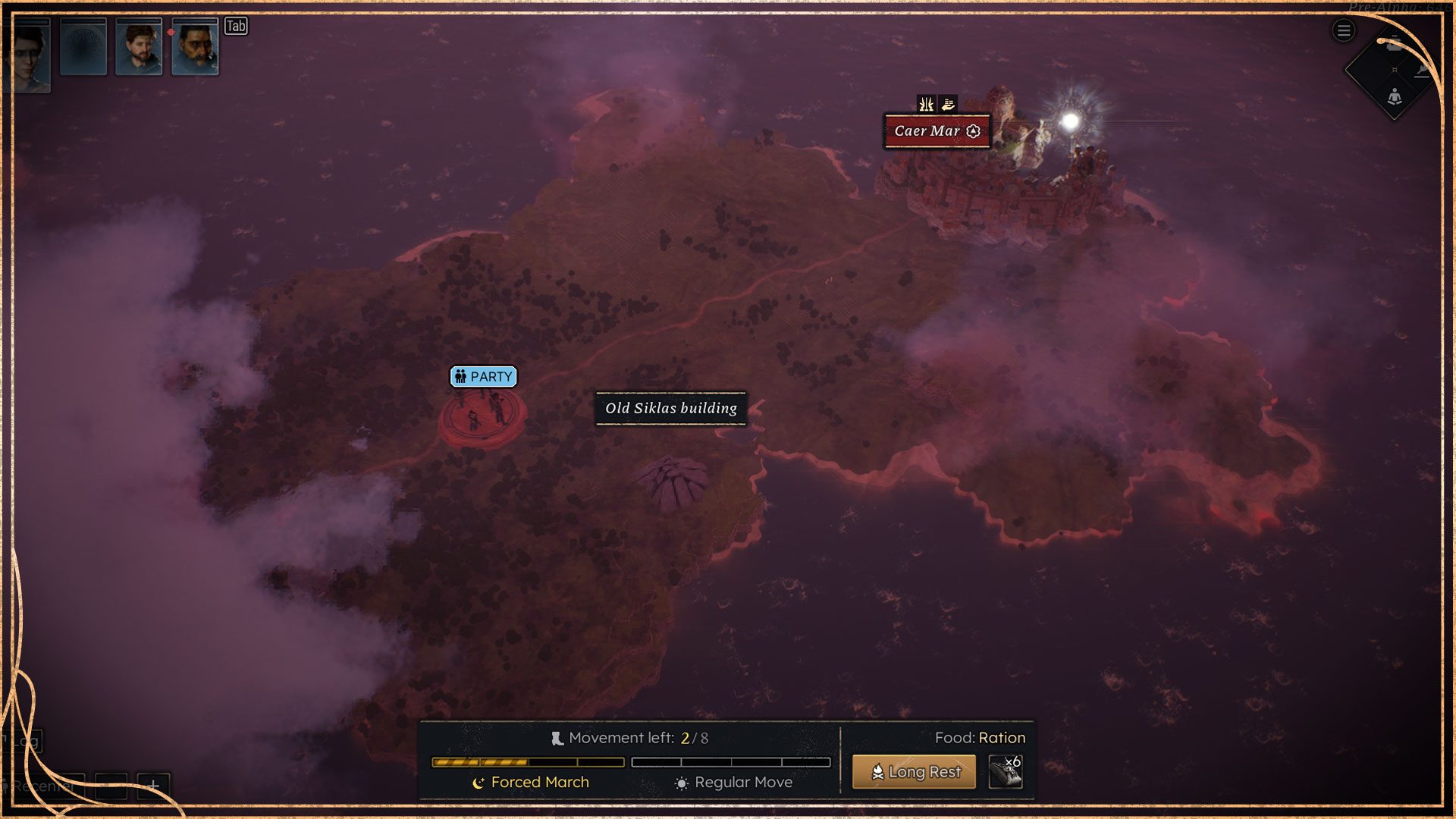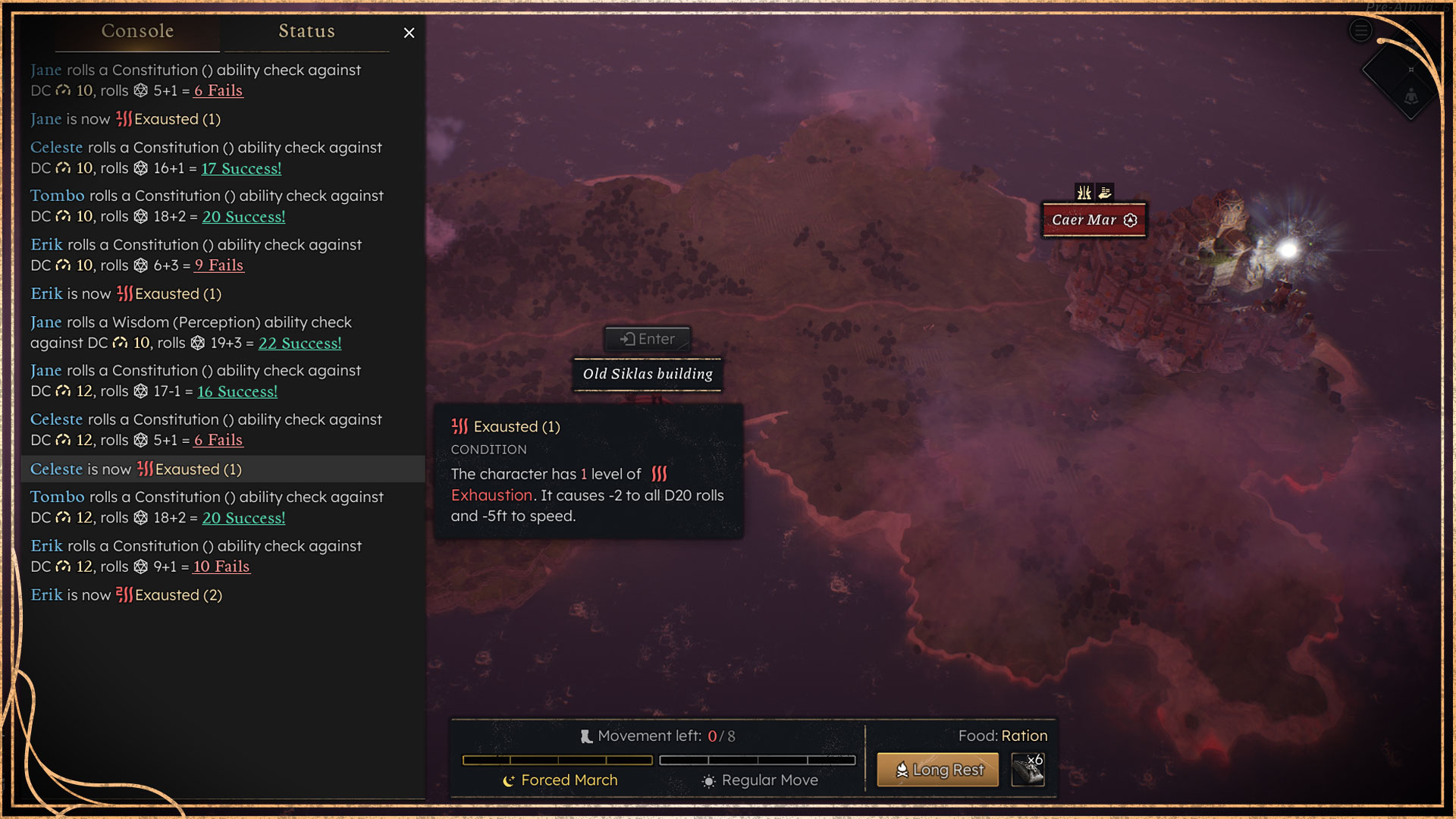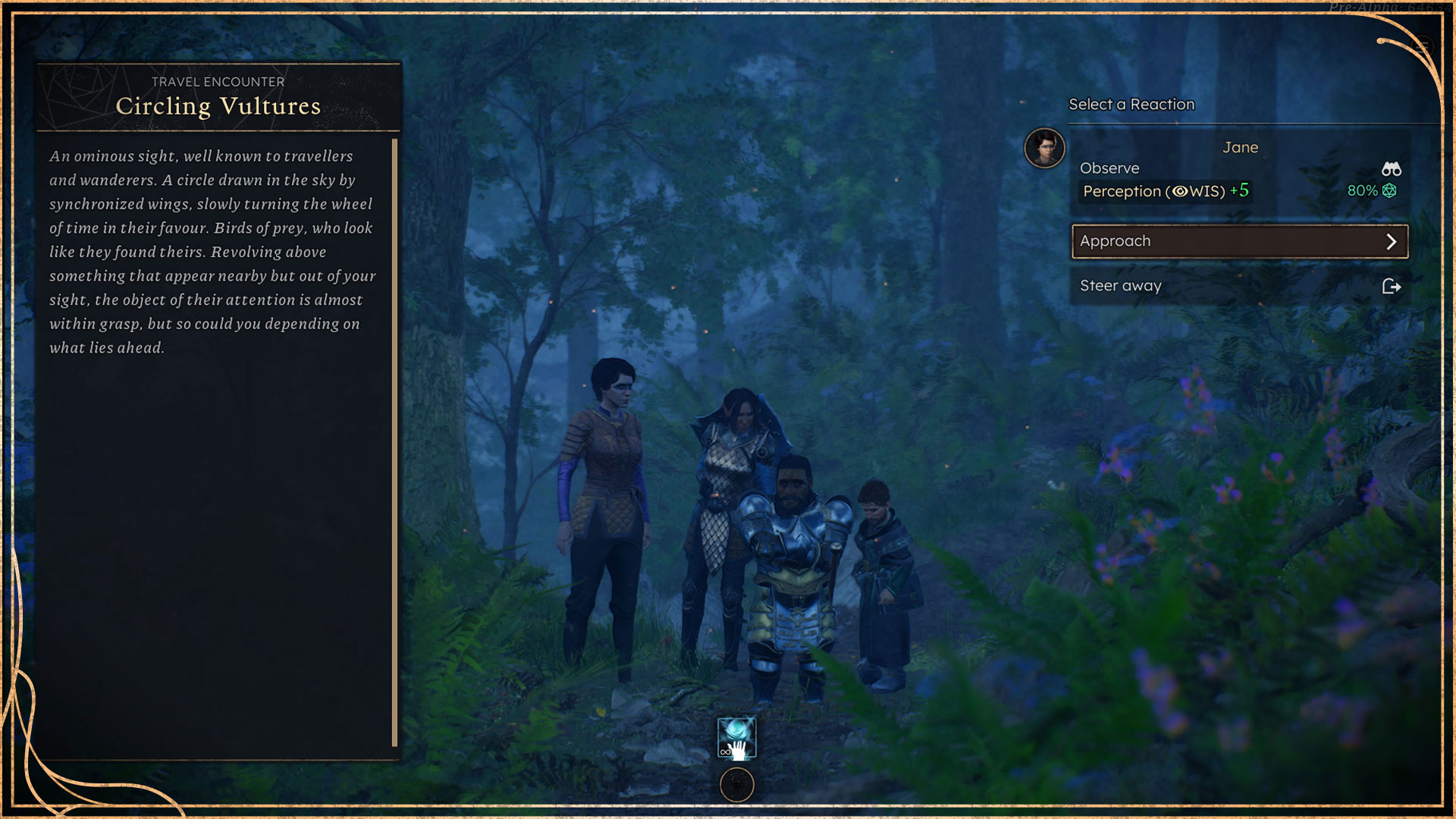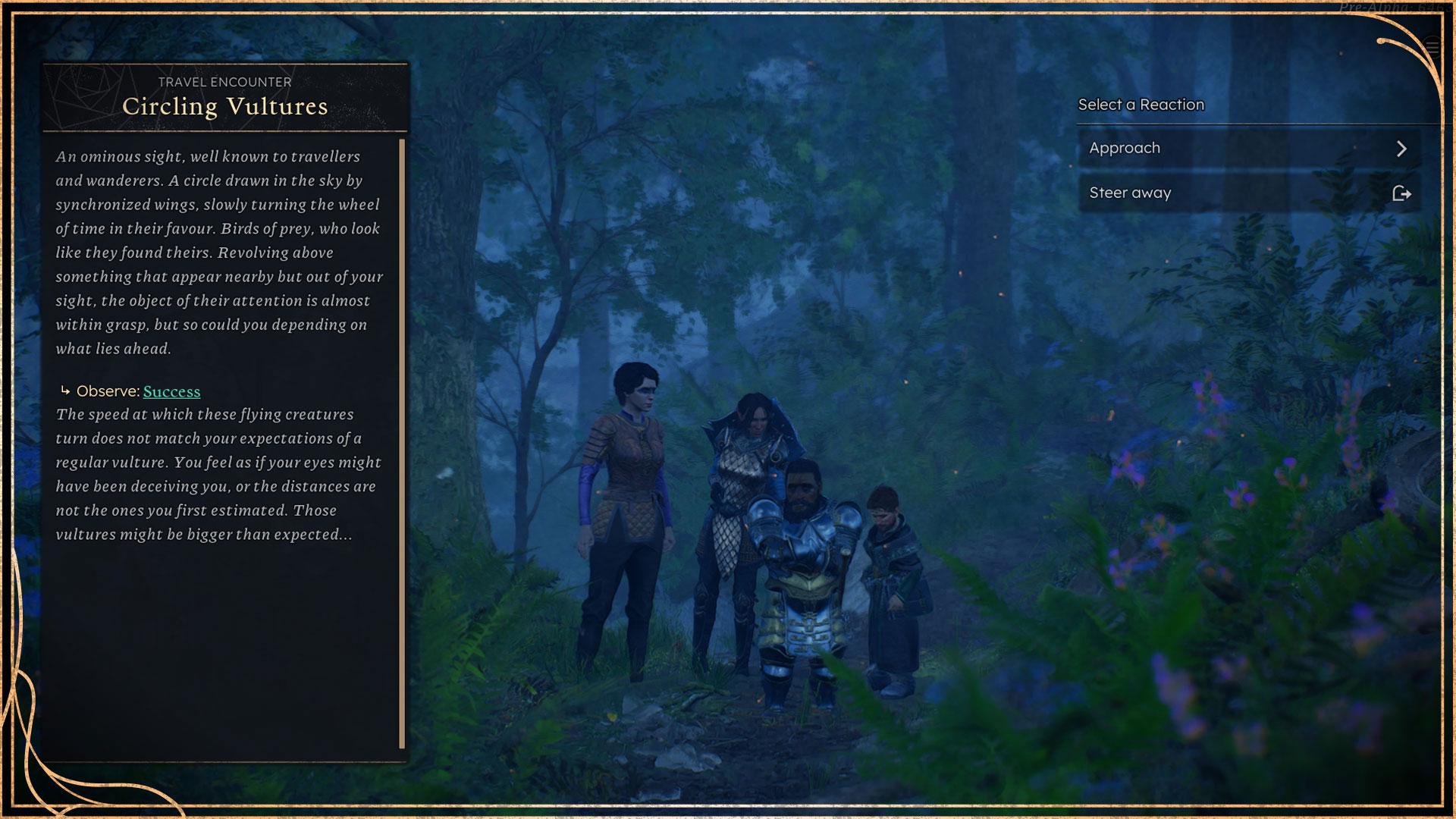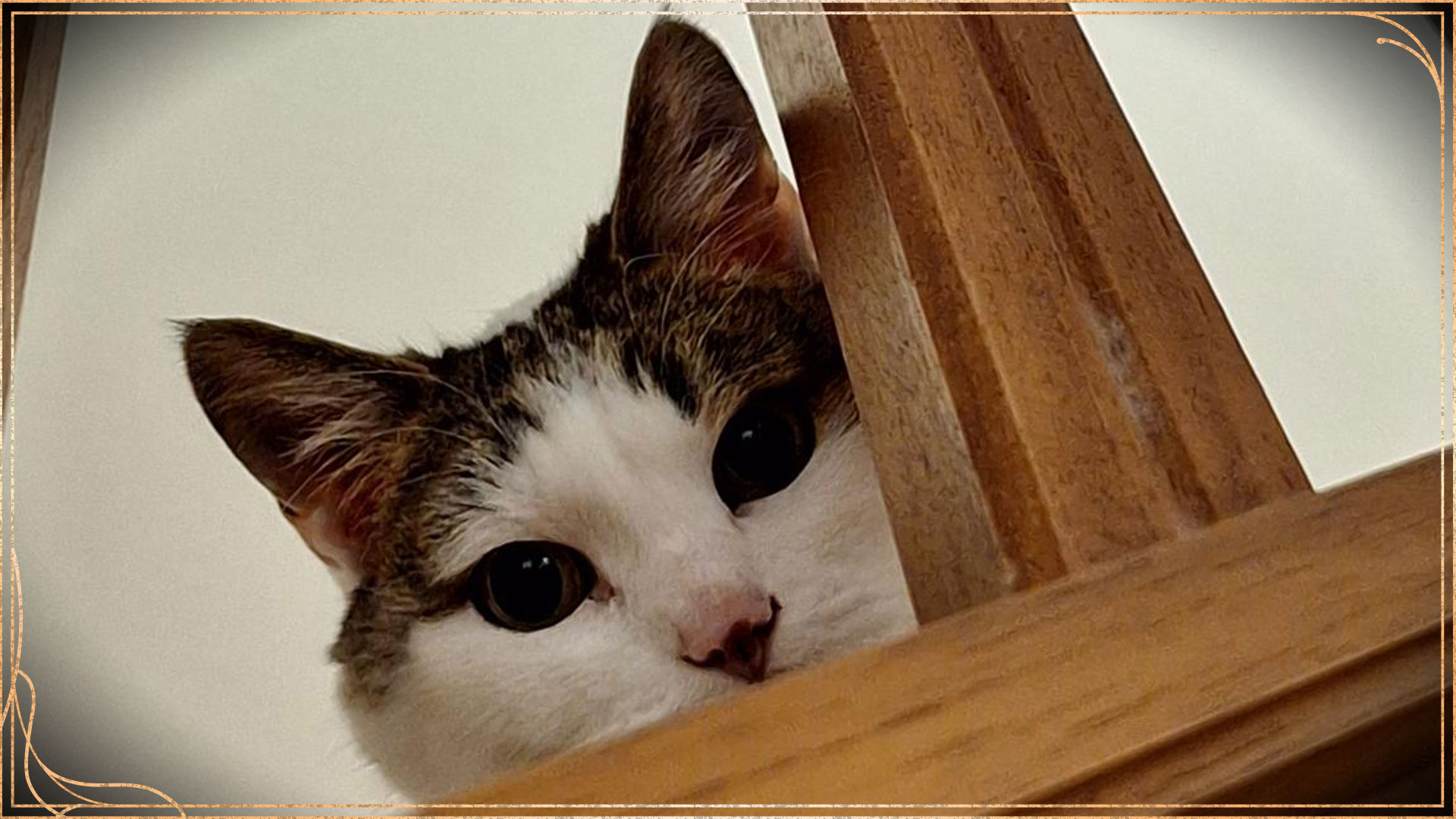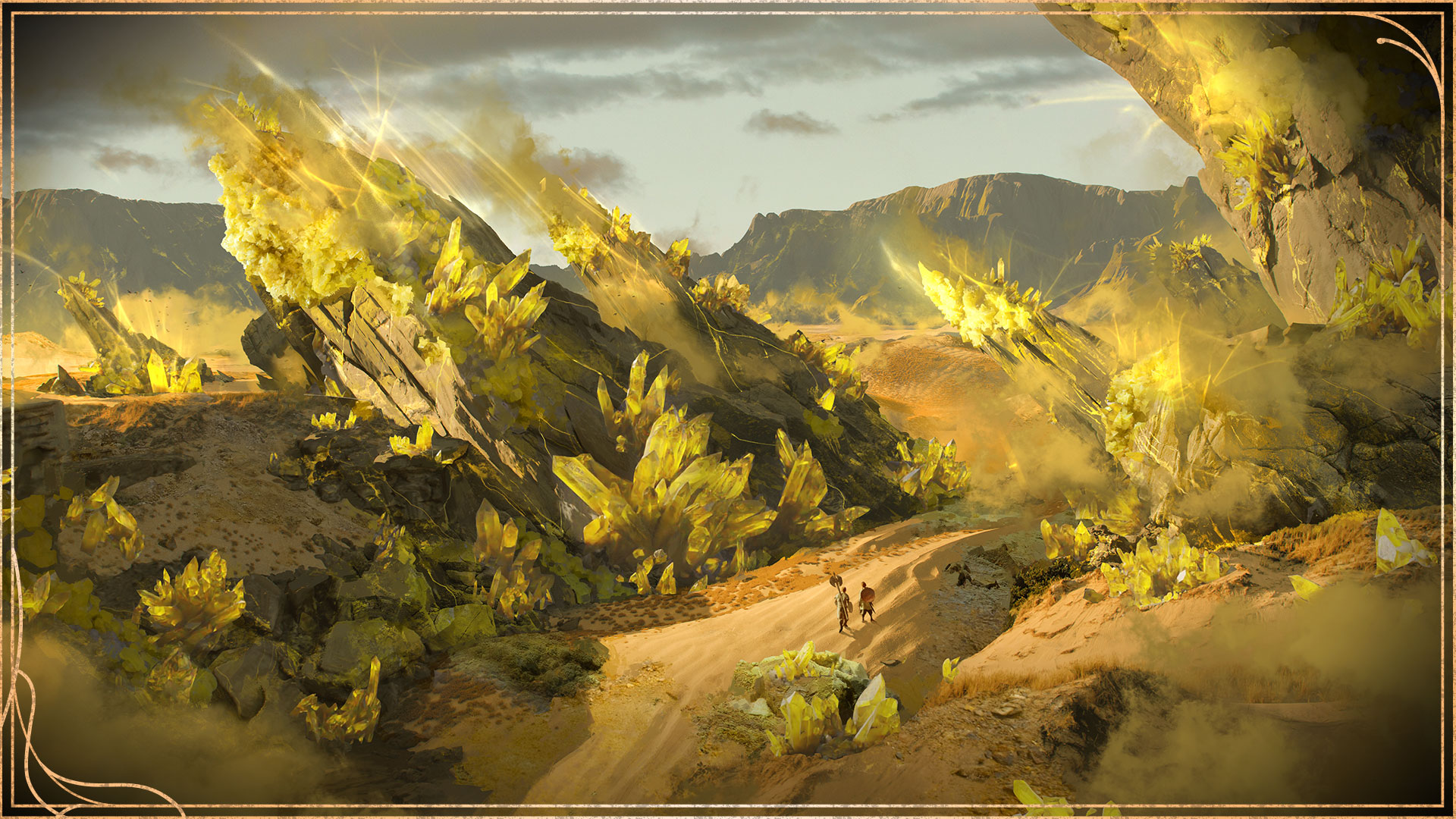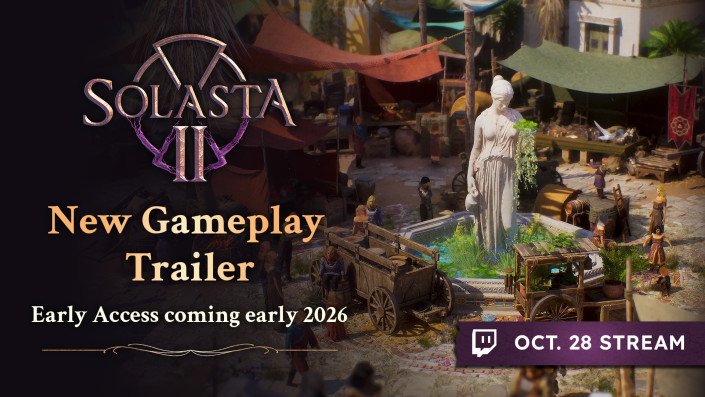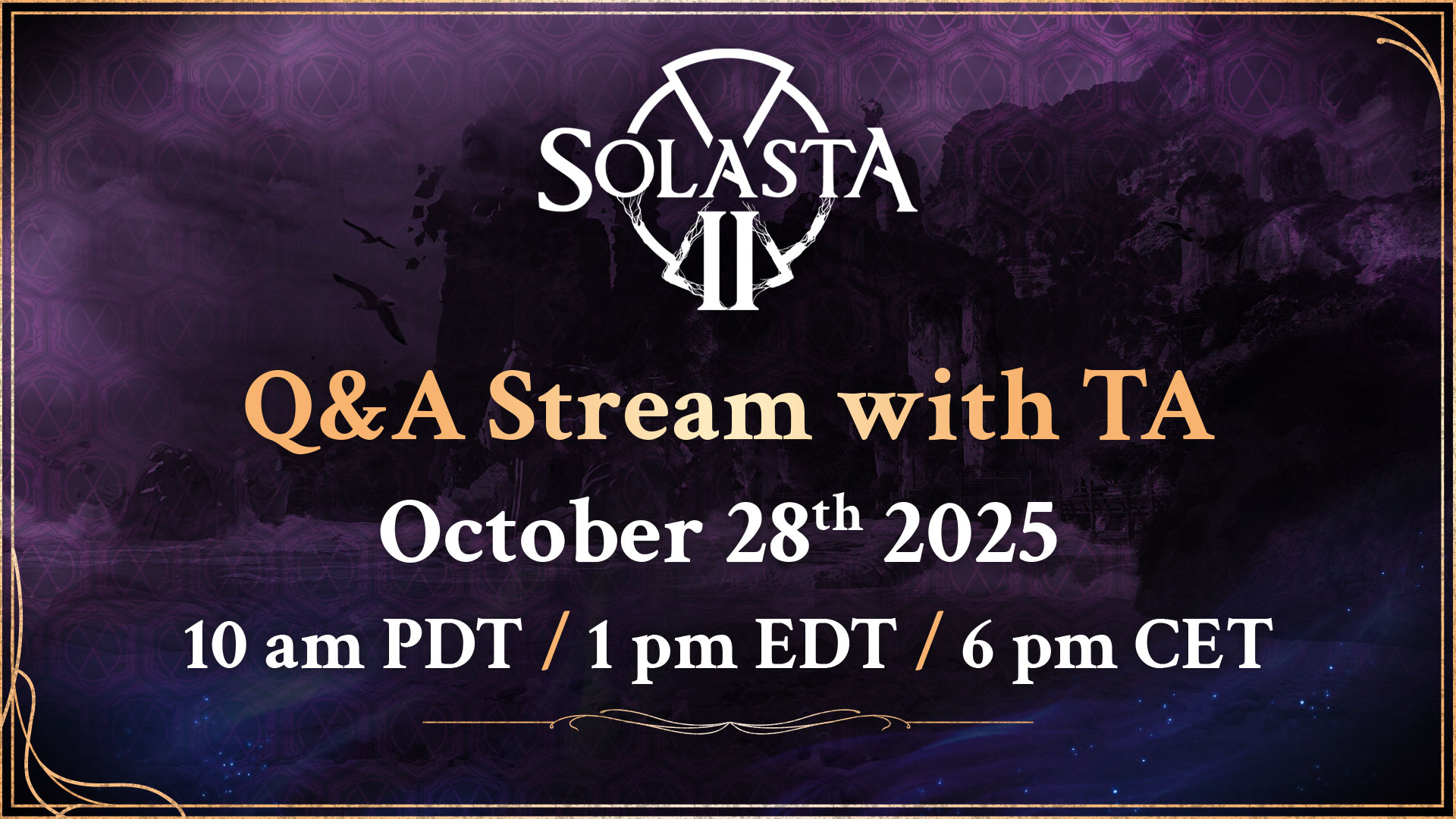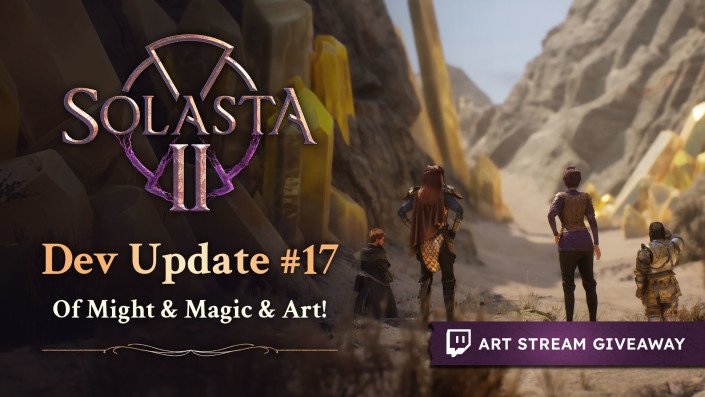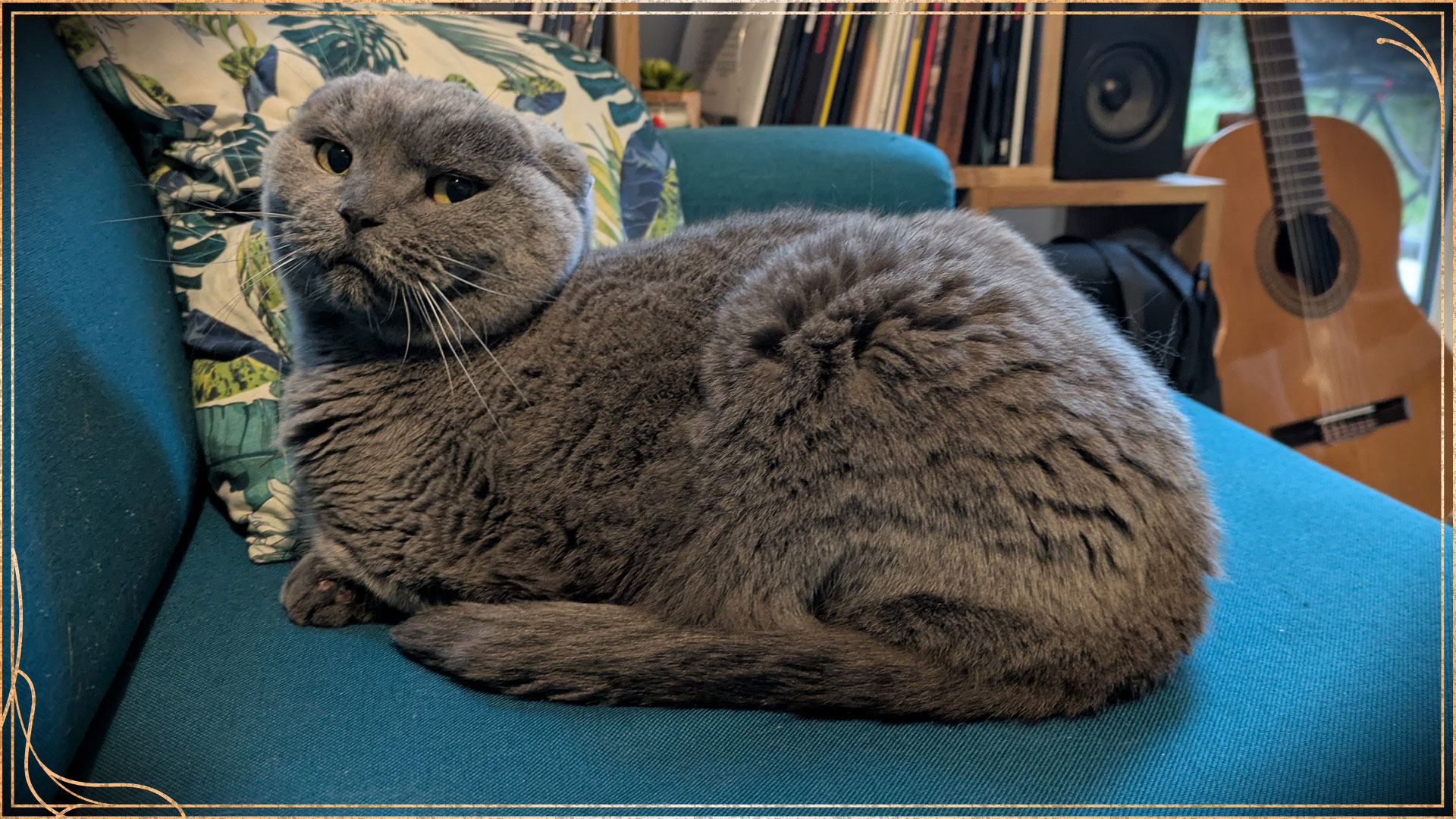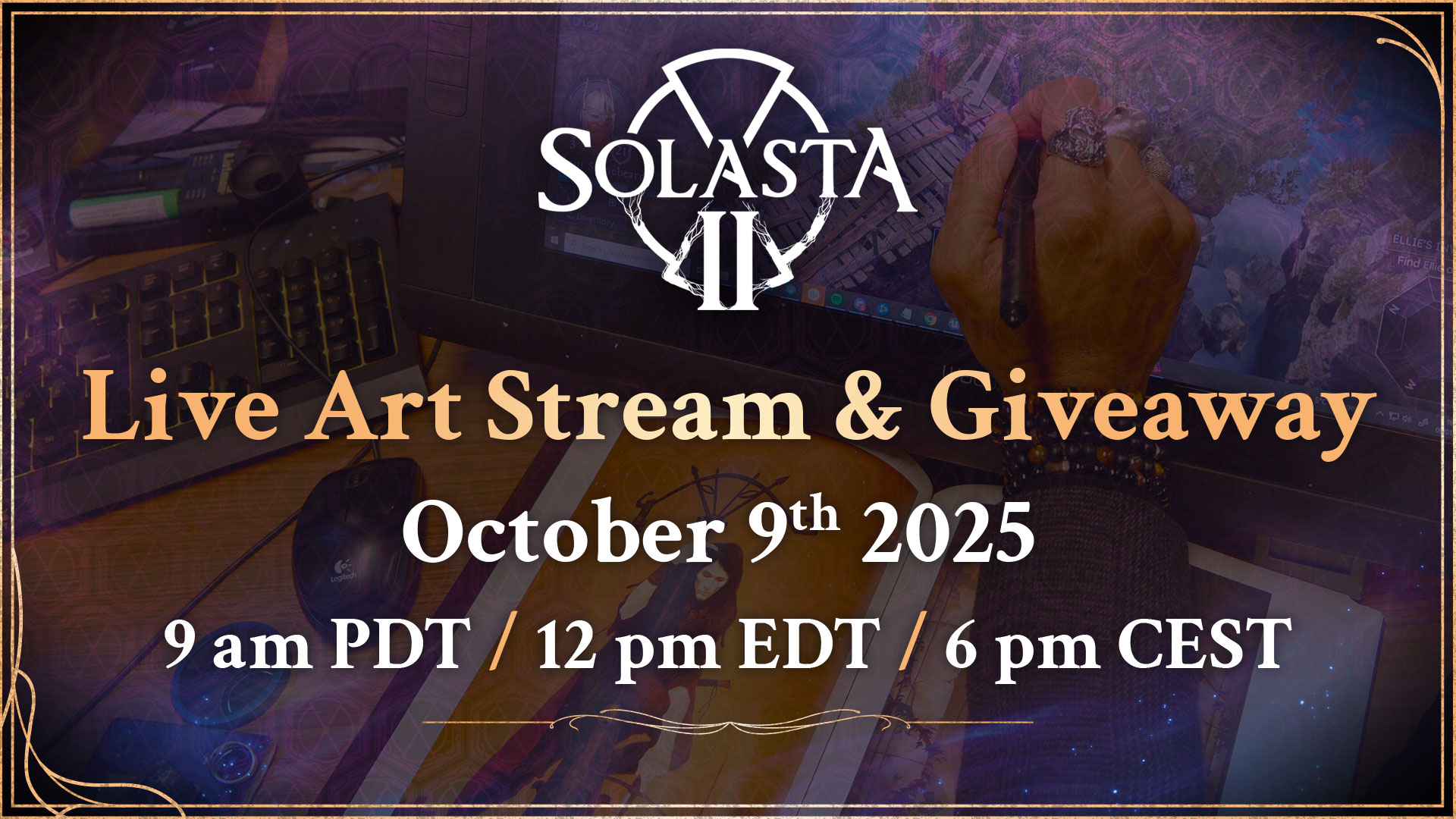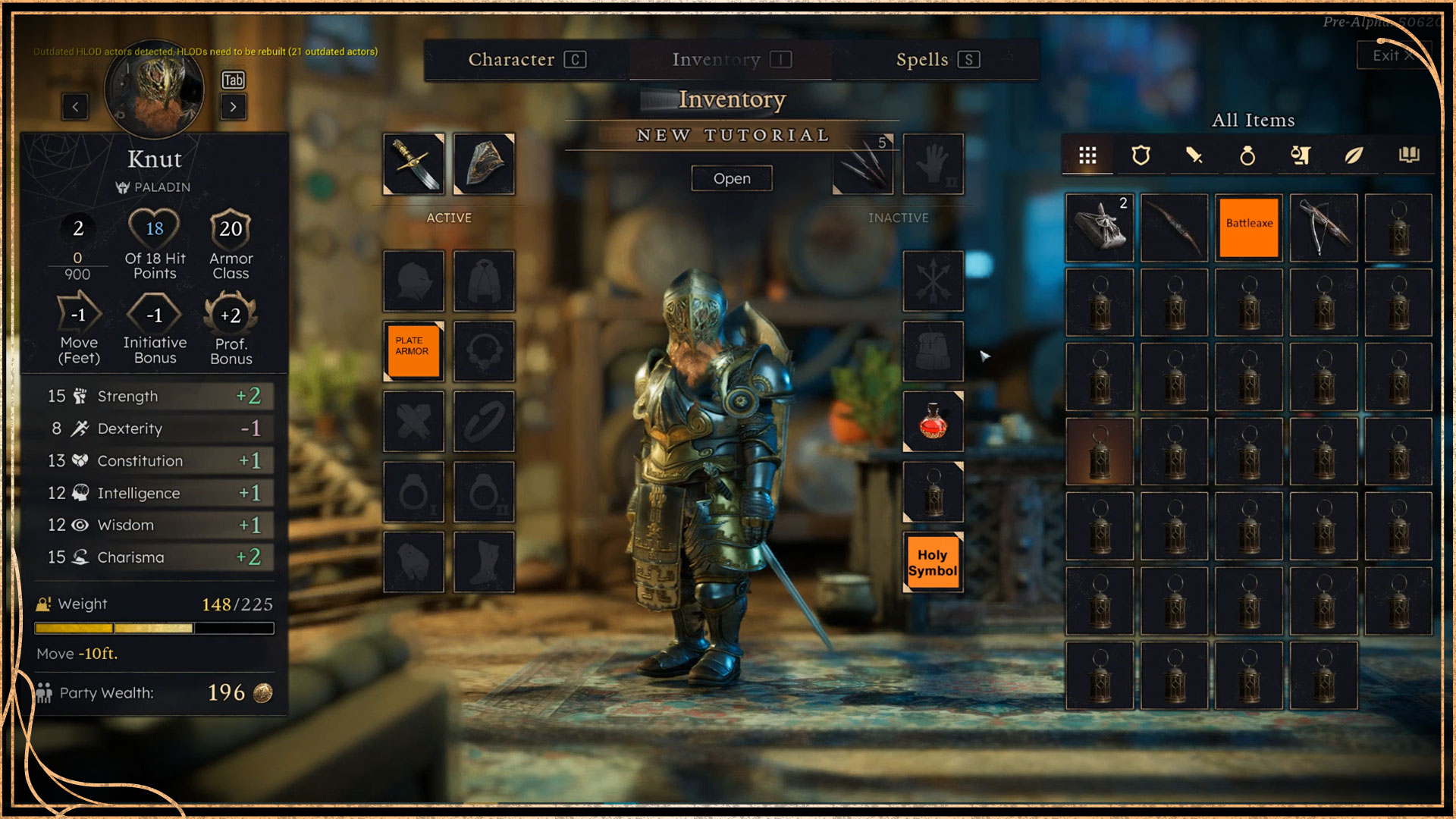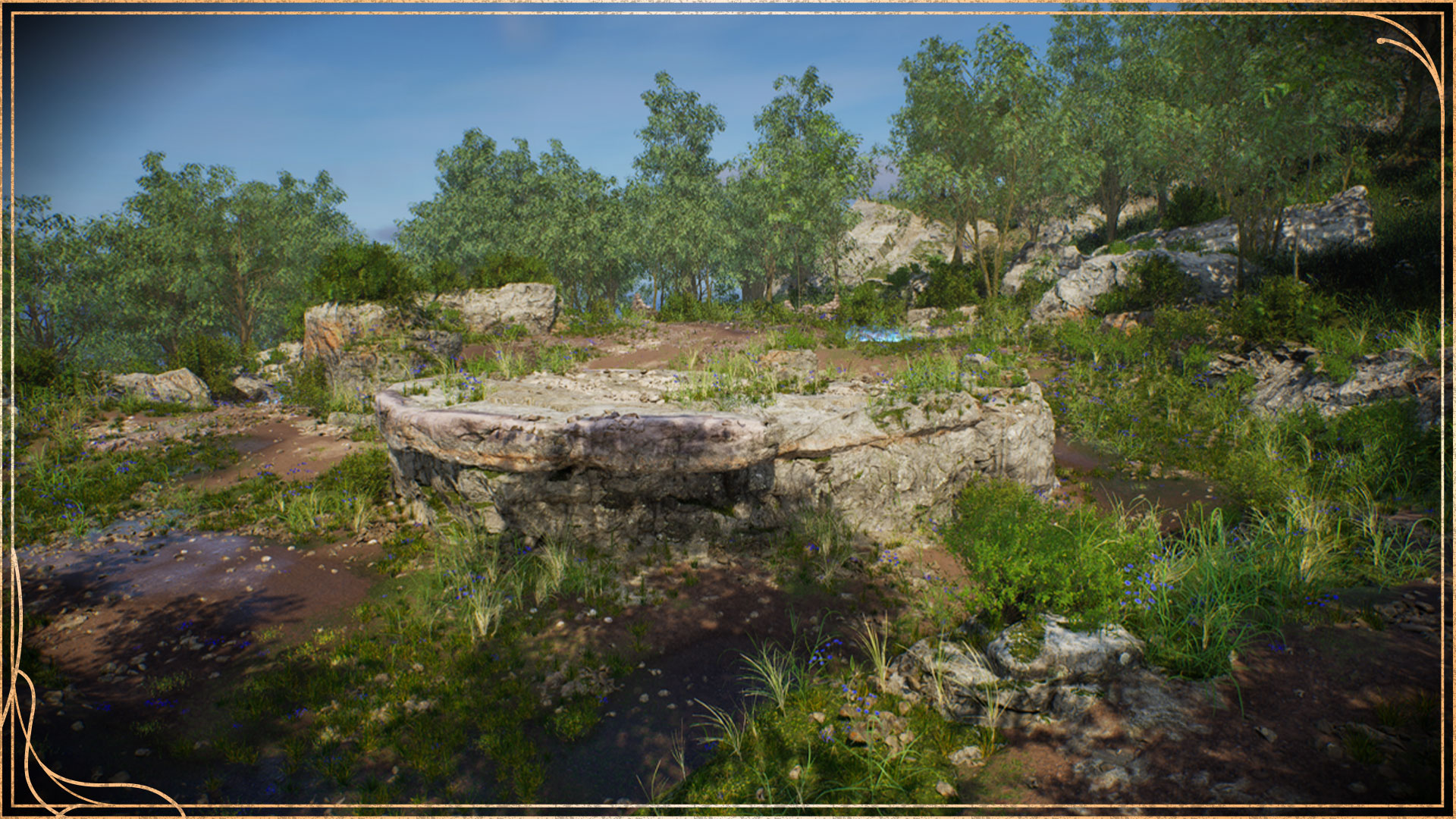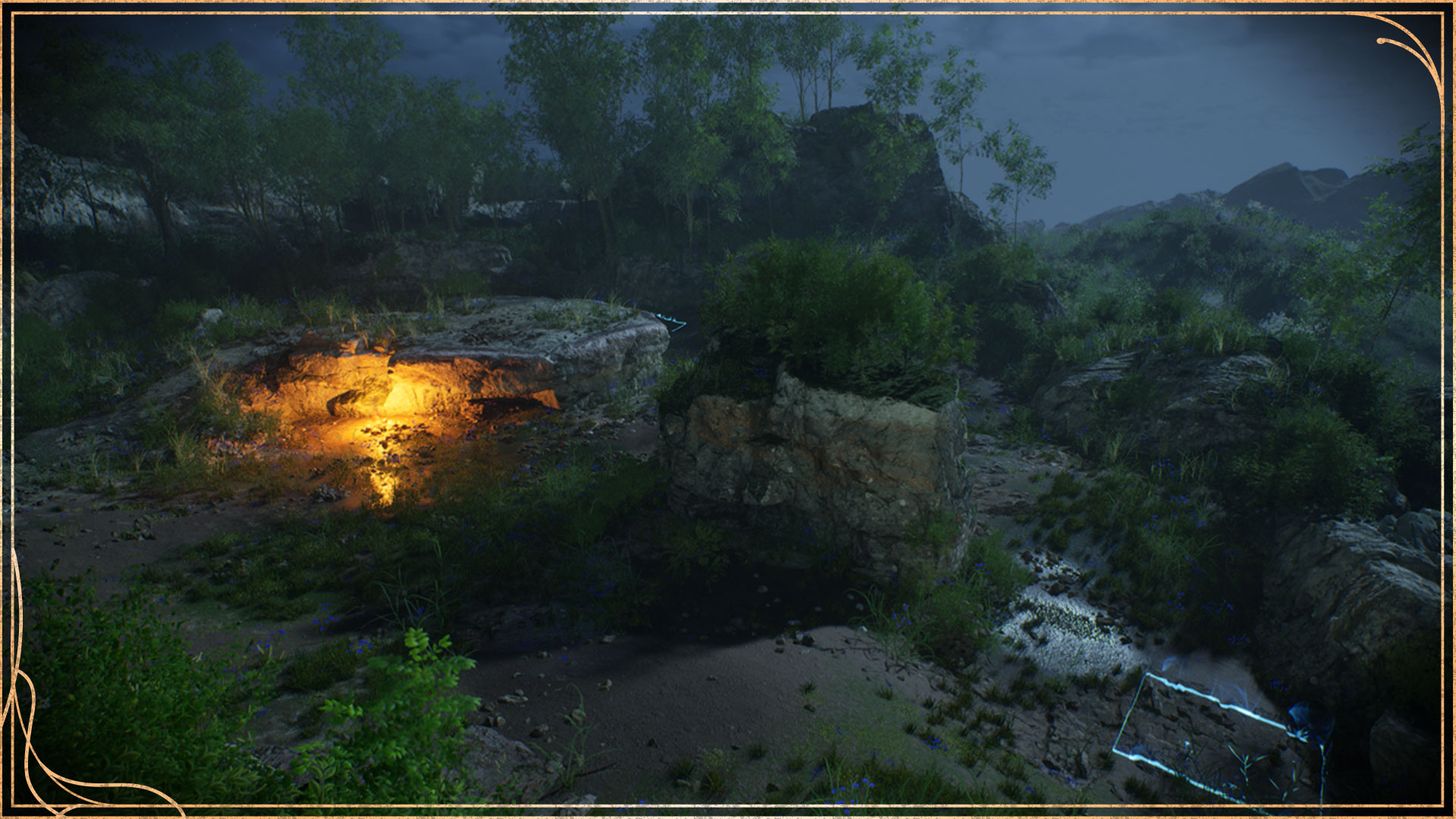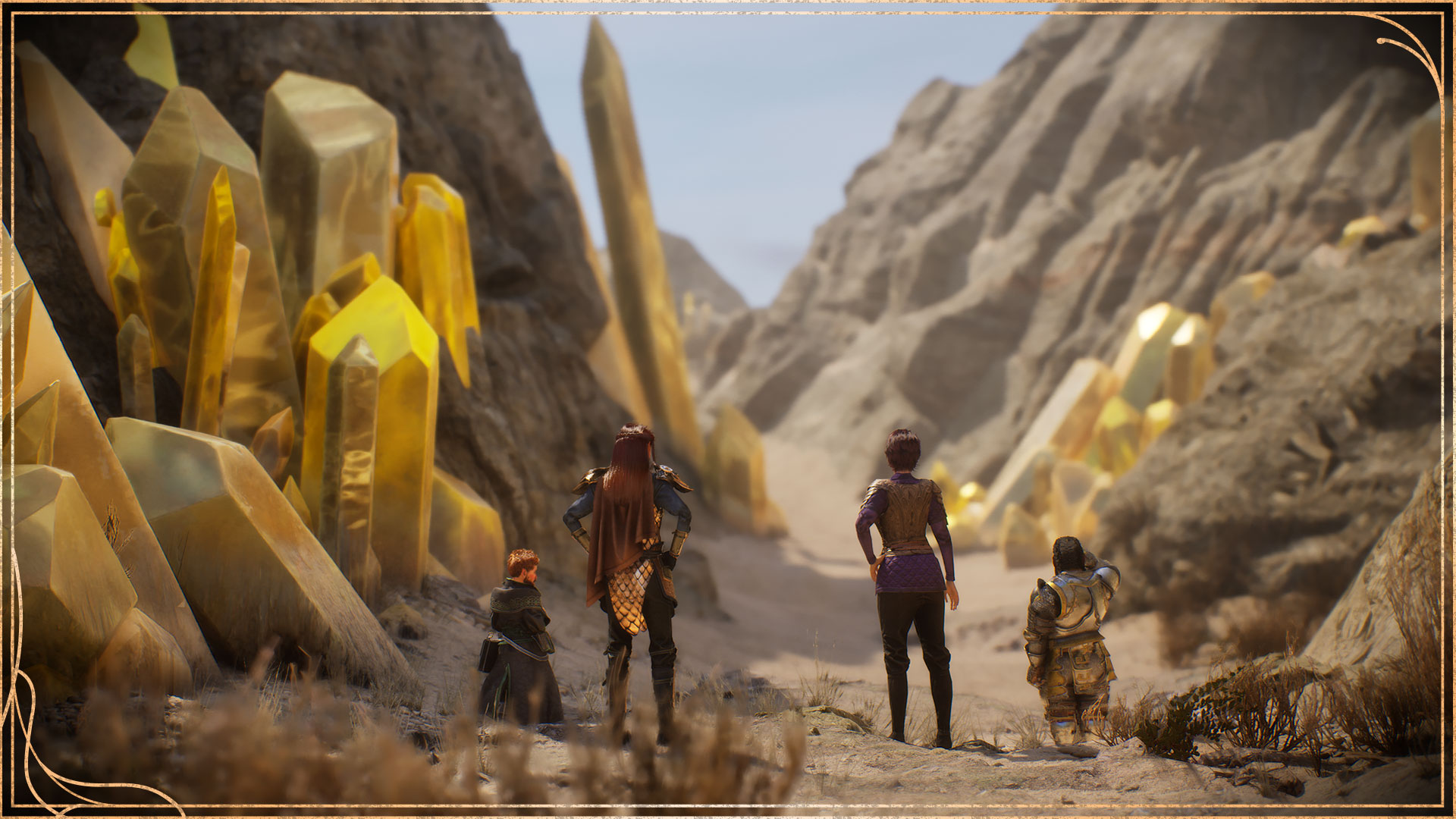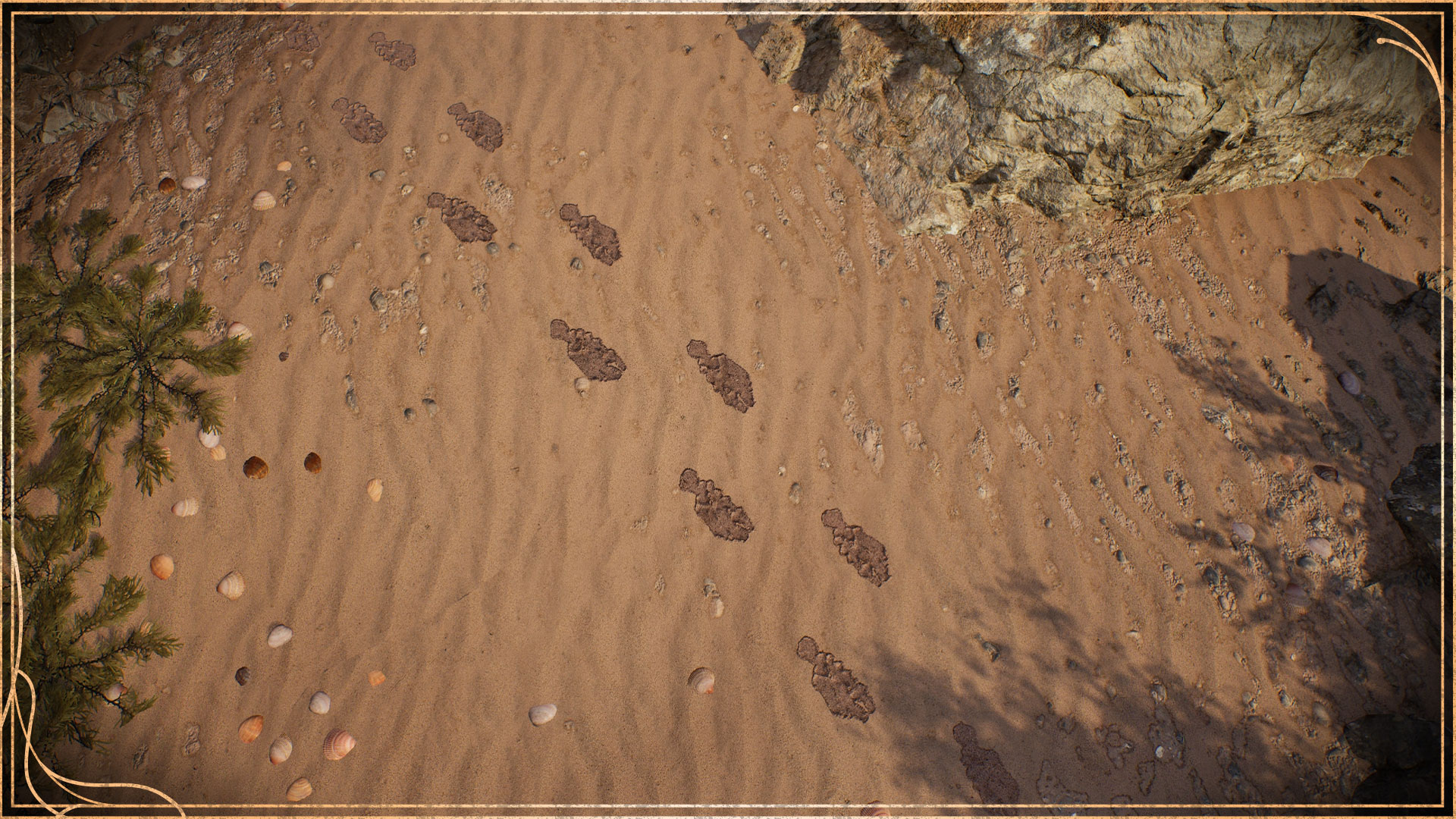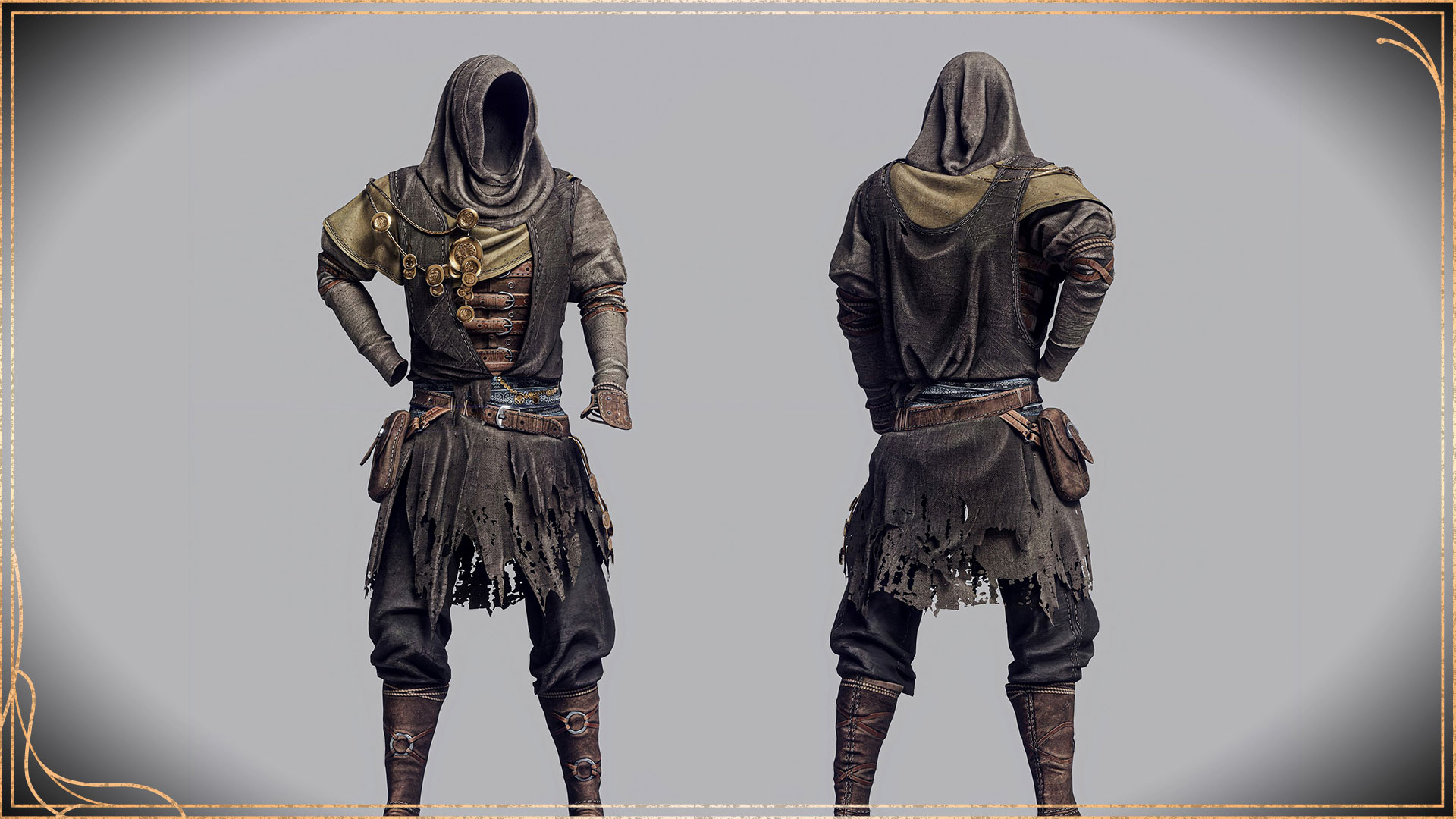How are you doing, adventurers?
After learning about Neokos, you may think exploring it will be a leisurely stroll. Sure, you may run into a few bandits and monsters, but nothing a good walloping can’t fix, right? WRONG! As your party grows stronger, the various factions of Neokos will seek to know about your… dispositions. Are you friends? Or foes?

Simba bellyrubs only unlock after you're done with the Feline faction questline. Now get to it!
Before we start, don't forget to wishlist Solasta II on Steam - it helps us a ton!
![]()
The Beacon
A powerful mage once said I am a Beacon of knowledge blazing out across a black sea of ignorance - oh wait, “wrong game” I’m being told. Regardless, one could argue that members of the Beacon probably regard themselves as such.
Originally established by a large expedition from overseas, the Beacon was named as such as they were “bringing the light of the Manacalon Empire” to the savage lands of Neokos. Their expansion efforts started with carefully prepared intelligence work, staging local revolts to destabilize the established Siklas empire while the main forces landed. With strong arcane prowess and military might bolstered by the massive army of slaves Manacalon is known for, the Beacon quickly wrestled almost half the continent away.
This aggressive expansion was suddenly halted by the Cataclysm - in the ensuing chaos, most of the slaves they brought along escaped their shackles and turned onto their masters. The Beacon, suddenly losing massive amounts of manpower and access to their most powerful tool, arcane magic, had to quickly retreat. With the inability to get reinforcement from Ferendragh and the fall of the Manacalon Empire, the Beacon ended up confined to the northern peninsula of this continent, with Caer Mar as its main fortress.
Over the centuries since the Cataclysm, the Beacon has switched to a more diplomatic approach. Everyone knows it would take too much bloodshed to completely wipe them out due to their fortified position and geographic advantage - and with the tenuous relations between the other factions, the Beacon’s existence is… mostly accepted.
A remnant of Manacalon, Caer Mar is still governed by strong laws and guards posted on every wall, ruled by a certain Lady Anabasia with a silken glove wrapped around an iron fist. However, the great city has long since opened its doors to travelers and merchants - these days, it is not rare to find people from other factions perusing wares or sampling ales in the streets of Caer Mar… although one wrong word and you could quickly find yourself rotting in dungeon cells for a long, long time.
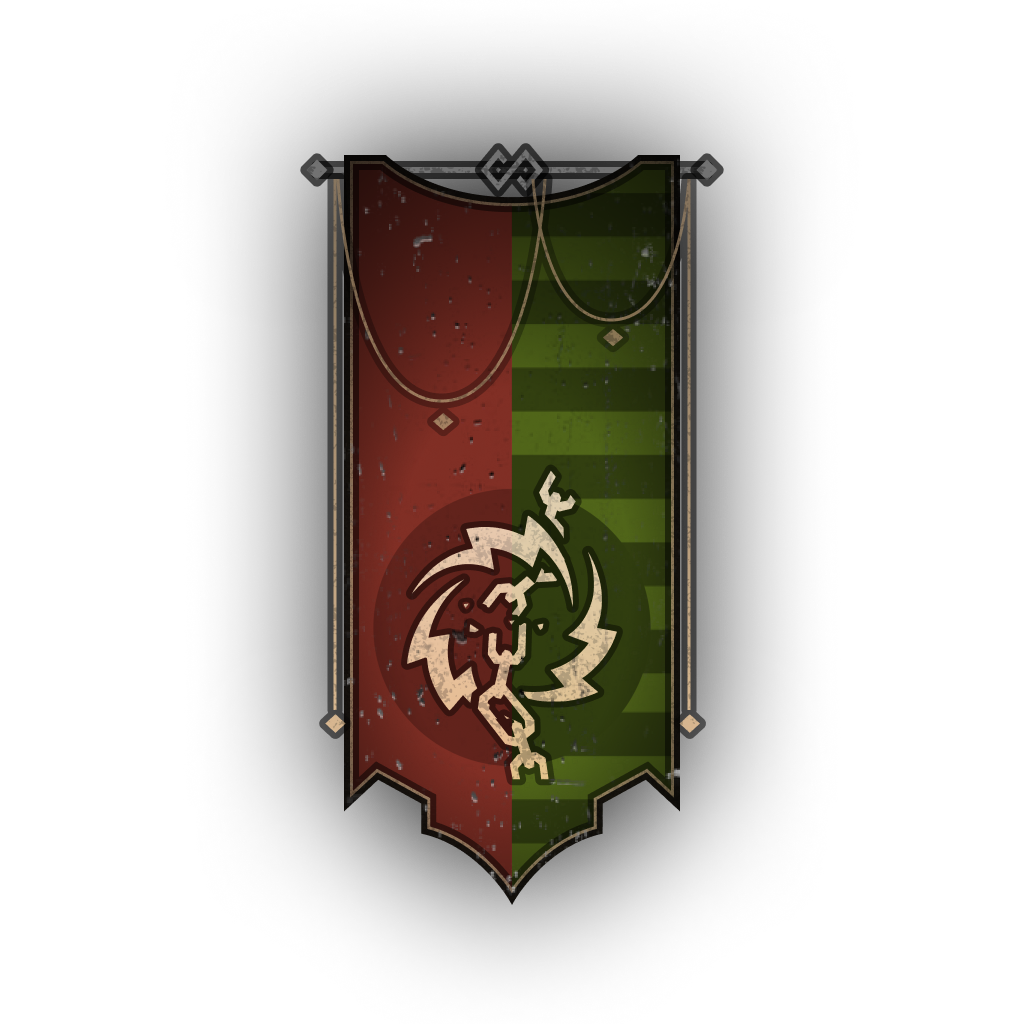
The Argad Republic
Named after Argad Ironfist, the main leader of the massive slave revolt following the Cataclysm, the Argad Republic is an aggregation of folks of any kind, from anywhere, who value personal freedom above all. Its people refer to themselves as Argeides, Argads or even “The Free” - which is a perfect reflection of the fact that the Argad Republic is not a monolithic faction.
In fact, it is a faction full of contradictions. While they value freedom and equality, they also tend to have militaristic tendencies against those who do not share their view of the world. That same equality which is paramount to an Argad often only applies to other Argads, not to outsiders. And while they loathe slavery and lordship, their pursuit of wealth and land often means some people end up… more equal than others, to say the least.
You will find many kinds of worship in Argad. As they like to say, “You can never have too many gods looking out for you!”. That being said Misaye is favored amongst other deities, with most major Argad settlements displaying Copper Tablets of “The Declaration of Misaye and the Free” in their central market square - a permanent and visible declaration of Argad freedom.
Argad politics can be extremely volatile with frequent clashes and arguments. Between the 2 appointed Consuls in charge of Civilian and Military matters, the 13 Senators supporting them and the Tribunes of the Hundred ratifying each proposal, discussions tend to be very lively - to the point that most end up retiring after a while due to stress. Unsurprisingly, this structure led to the formation of two major political groups, one in support of more militaristic measures while the other favors commerce.
Interestingly, Bard Colleges are an integral part of the Argad Republic as many who follow this path share the Republic’s love of freedom and individualism. Beloved by common folks and naturally roaming the lands to share music and stories, these Bards tend to accumulate a lot of information which they then share to uncover corruption, infiltration and other nefarious plots. This allows the Republic of Argad to remain fairly protected against outside interference even without a strong central government.
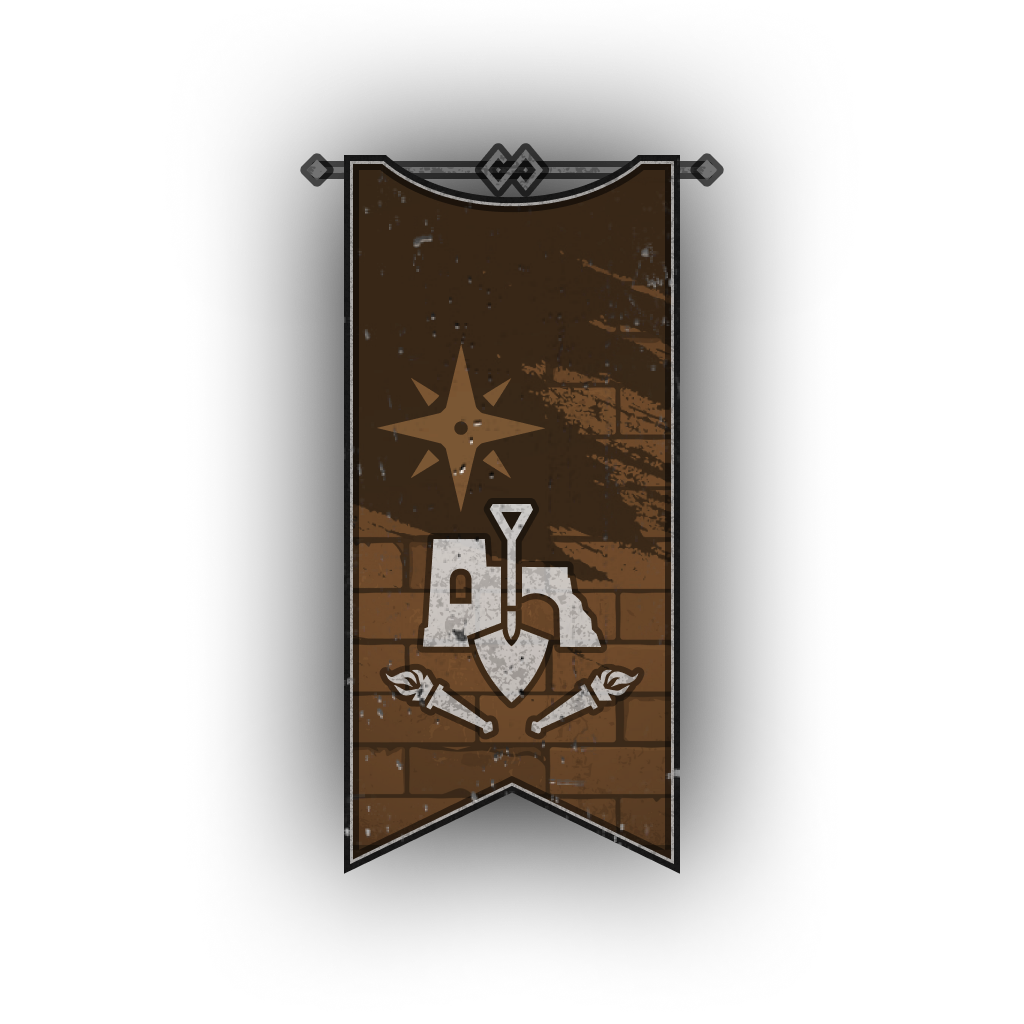
The Comber
Very likely the most non-aligned faction on Neokos, the Combers are a loose organization of freelancers specialized in finding and trading all sorts of goods. If it sounds similar to the Scavengers, it is not by chance! The founders of the Combers created the guild after hearing about the Scavengers from a rare sailor hailing from Ferendragh, and decided to organize in a similar fashion on their own turf.
Combers are an eclectic group of people who mostly left their former allegiance at the door. They don’t ask too many personal questions, they do not judge your appearance, all that matters is that you can hold your own when it comes to work. In the past, many Combers would actually delve into ruins themselves in search of rare treasures - but with many dying to traps and monsters they slowly settled for safer options, letting adventurers take the risk and providing services for a smaller cut of the profit.
Some would belittle the Combers and regard them as mere junk gatherers, but that couldn’t be further from the truth. When you need a specific item found, you go to the Combers - they are the ones who could find a needle in a haystack. An unbelievable amount of items, valuable or not, go through their hands, and they have a knack for sifting through them to make sure each finds the right buyer.
The Combers also have a fair share of researchers and scholars, who pour time and effort going through every obscure document found by others. It is not rare for a party of adventurers to find hidden doors or secret rooms thanks to Comber help - though of course, rarely for free. To be fair, do you really want to spend the next few days excavating each valuable item from the ruins you just cleared?
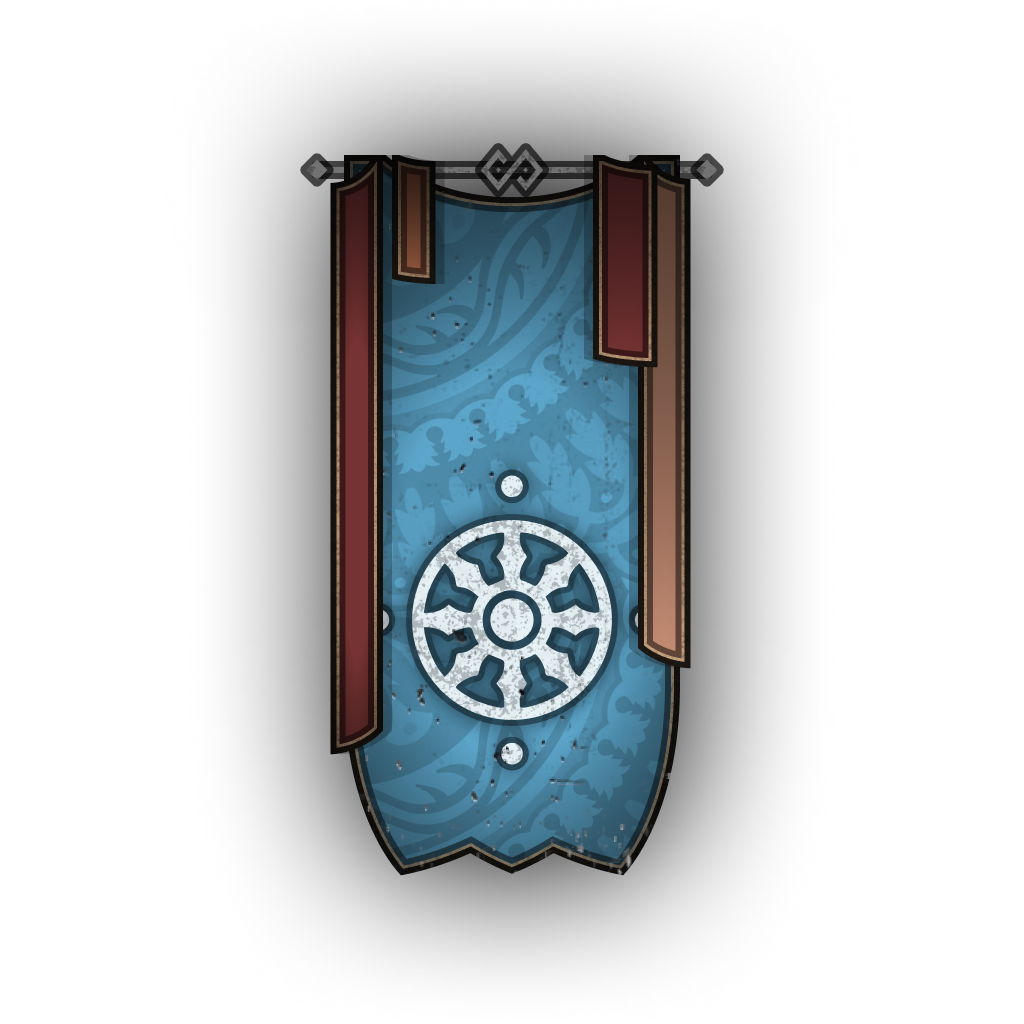
The Ka’Umm
Claiming to be the oldest dwellers of Neokos, the Ka’Umm are a collection of nomadic tribes of varied origins who roam the lands following a path known only to them. They claim to have no enemies and live a simple - although dangerous - life centered around traditions, the pursuit of wisdom and understanding of magic.
The People, as they call themselves, can be found all over Neokos. The vast majority of them are physically fit as they mostly travel on foot, with some even pulling wagons by hand when not enough draught animals are available. They have a strong affinity with magic, with most tribes having at least a druid or a wizard amongst them.
Ka’Umm tribes are not only defined by blood or legacy - one can freely leave their tribe to join another. Tribes can split if internal tensions arise, or if they feel like they became too large, with most consisting of about 50 to 150 people. They value friendship and knowledge above all; one is considered rich not by the amount of gold they possess but by the wisdom they share and the number of friends they can count on. Gold and silver are but a decoration, and they trade through barters, gifts and favours.
Interestingly, although their culture predates the Cataclysm, the Ka’Umm have taken to the worship of Arun and Maraike alongside their native belief of the Dream Song - a huge tapestry of resonance and harmonic sounds that they believe holds the universe together. Most Ka’Umm idioms reflect this, with phrases such as someone lacking harmony denoting a person’s poor character, or giving praise by calling someone a good listener.
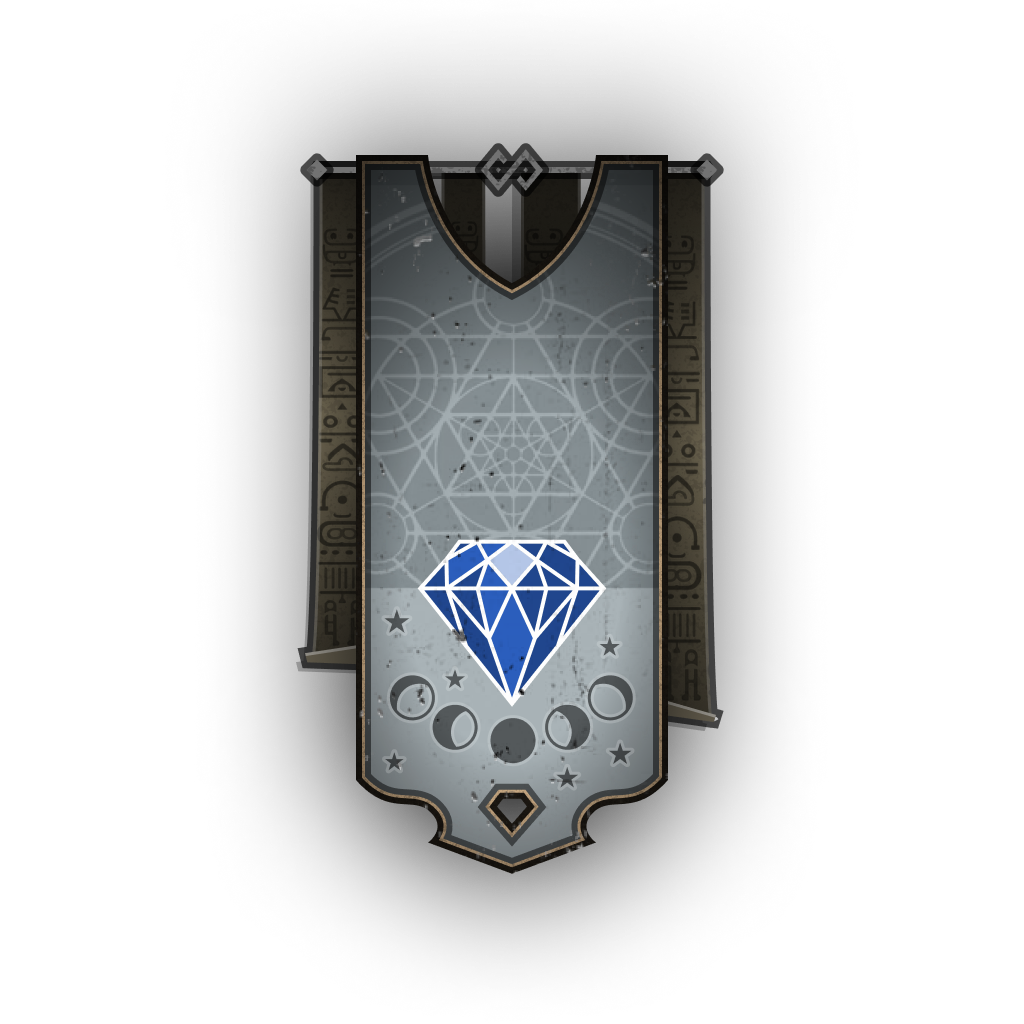
The… other factions?
Those four are not the only ones you will run into during your journey on Neokos, but we do not wish to reveal all of them just quite yet - where would be the fun in that?
We will just leave you today with the knowledge that… Yes, there once was a Siklas Empire, and yes it was destroyed. And no, they are not the only endemic ancestry of Neokos.
Alright, that’s it for today. Look out for more news of Solasta II… very soon!
Article by Tactical Myzzrym
Follow us on:


